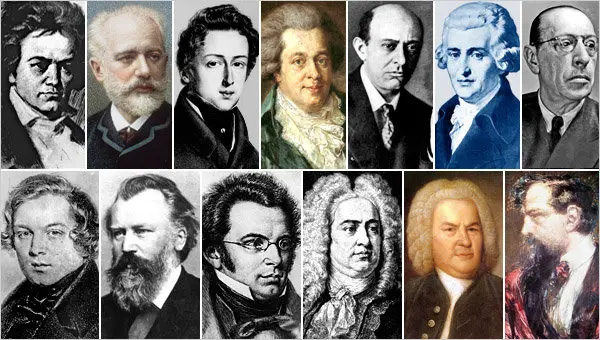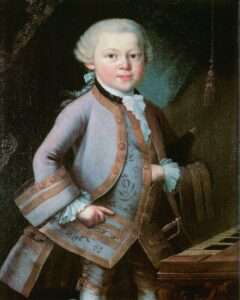A Comprehensive Guide to Classical Music
Introduction to Classical Music
Classical music is a broad term that refers to a long-established genre of music, rooted in the traditions of Western culture. It spans over a thousand years, from the Middle Ages to the present day. The term ‘classical’ is often used to refer to music that is not pop, jazz, or any other contemporary genre.
The importance and influence of classical music cannot be overstated. It has shaped the course of human culture and continues to do so. It has a profound effect on our emotions, intellect, and even physical health. Classical music has also been a source of inspiration for many other genres of music.
The Evolution of Classical MusicClassical music has evolved through different eras, each with its own unique characteristics and styles.
- The Baroque Era (1600-1750) was characterized by complex pieces and the use of counterpoint. It was during this era that composers like Bach and Handel made significant contributions. You can explore more about this era at The Classic Review.
- The Classical Era (1750-1820) saw a shift towards simplicity and elegance. This era was dominated by figures like Mozart and Haydn.
- The Romantic Era (1820-1900) was marked by a focus on emotion and individualism. Composers like Beethoven and Schubert were key figures during this period. For a deeper understanding of this era, visit Classic FM.
- Modern Classical Music (1900-present) is characterized by a wide range of styles and approaches, from the impressionism of Debussy to the minimalism of Philip Glass.
Each era has contributed to the rich tapestry of classical music, providing us with a vast repertoire of works to enjoy and study.
Understanding Classical Music
To fully appreciate classical music, it’s important to understand its structure. Classical music is often structured around a series of highs, lows, and intervals. This structure creates a sense of journey and narrative, taking the listener through a range of emotions and experiences.
- Highs are the climactic moments in a piece of music, where the tension and energy reach their peak.
- Lows are the more subdued, introspective moments.
- Intervals are the spaces between the notes, which can create a sense of tension or resolution.
The role of musical instruments in classical music is also crucial. Different instruments can evoke different emotions and create different textures. For example, the violin is often used for its expressive and emotive qualities, while the piano can provide both melody and harmony. For more insights into the role of instruments in classical music, check out this New York Times – Music Section.
The Great Composers of Classical Music
Classical music has been shaped by the work of many great composers. Here are some of the most influential:
- Handel (1685-1759): A German-British Baroque composer known for his operas, oratorios, and concertos. His most famous work is the oratorio “Messiah”.
- Beethoven (1770-1827): A pivotal figure in the transition from the Classical to the Romantic era. His works, such as the “Symphony No. 9”, are renowned for their emotional depth and complexity.
- Mozart (1756-1791): A prolific and influential composer of the Classical era. His works, which include symphonies, concertos, and operas, are characterized by their melodic beauty and formal elegance.
- Stravinsky (1882-1971): A Russian composer, pianist, and conductor who is widely considered one of the most important and influential composers of the 20th century. His works, like “The Rite of Spring”, are known for their rhythmic complexity and innovative use of tonality.
- Debussy (1862-1918): A French composer associated with impressionist music. His works, such as “Clair de Lune”, are noted for their sensory content and use of non-traditional tonalities.
Each of these composers has made significant contributions to classical music, shaping its evolution and influencing countless other musicians. For more information on these composers and their works, visit The Classic Review.
Iconic Classical Music Pieces
Classical music, with its rich history and diverse range of styles, has given us a wealth of iconic pieces. Each piece tells a unique story, reflecting the creative vision of its composer and the cultural context in which it was created. Here are some of the most renowned:
- Handel’s Zadok the Priest: Composed by George Frideric Handel, “Zadok the Priest” is one of four anthems written for the coronation of King George II of Great Britain in 1727. It has been performed at every British coronation since. The piece is known for its dramatic use of choral and orchestral forces, building from a quiet, suspenseful introduction to a powerful, triumphant climax.
- Holst’s The Planets: Gustav Holst’s “The Planets” is a seven-movement orchestral suite, with each movement named after a planet and its corresponding astrological character. The suite is celebrated for its innovative orchestration, evocative mood, and the distinct character of each movement, from the ominous, relentless march of “Mars, the Bringer of War” to the mystical, ethereal beauty of “Neptune, the Mystic”. For more insights into this piece, visit Classic FM.
- Beethoven’s Symphony No. 5: Perhaps one of the most famous pieces in all of classical music, Ludwig van Beethoven’s Fifth Symphony is a masterwork of dramatic tension and release. The symphony’s distinctive four-note motif, often described as “fate knocking at the door”, is one of the most recognizable motifs in Western music.
- Rachmaninov’s Piano Concerto No. 2: Sergei Rachmaninov’s Second Piano Concerto is a cornerstone of the romantic piano repertoire. Known for its lush melodies, rich orchestration, and technical demands, the concerto showcases Rachmaninov’s gift for melody and his virtuosic piano writing.
- Mozart’s The Queen of the Night’s aria from The Magic Flute: This aria, sung by the Queen of the Night character in Wolfgang Amadeus Mozart’s opera “The Magic Flute”, is one of the most famous in all of opera. Known for its demanding vocal range and dramatic intensity, the aria is a tour de force of virtuosic singing.
- Pachelbel’s Canon in D: Johann Pachelbel’s “Canon in D” is one of the most popular pieces of baroque music. The piece is built on a simple, repeating bass line, over which a series of variations are played. Its distinctive chord progression and melody have made it a favorite at weddings and other ceremonies.
- Stravinsky’s The Firebird: Igor Stravinsky’s “The Firebird” is a ballet score known for its innovative use of orchestration and rhythm. The piece, which tells the story of a prince who frees a magical firebird, was one of the works that established Stravinsky’s reputation as a leading modernist composer.
- Debussy’s Clair de lune: “Clair de lune”, from Claude Debussy’s Suite bergamasque, is one of the most famous examples of impressionist music. The piece, whose title means “moonlight” in French, is known for its evocative and atmospheric quality, with delicate, flowing melodies and innovative harmonic language.
Each of these pieces offers a different perspective on the richness and diversity of classical music. They showcase the creative possibilities of the genre, from the grandeur and drama of Handel and Beethoven to the subtlety and nuance of Debussy. For more information on these pieces andtheir composers, check out this New York Times – Music Section.
Classical music is a vast and diverse field, and these pieces are just the tip of the iceberg. Each one represents a unique artistic vision and a moment in musical history. By exploring these works, we can gain a deeper appreciation for the beauty and complexity of classical music, and the creative genius of the composers who have shaped this enduring art form. Whether you’re a seasoned classical music enthusiast or a curious newcomer, these pieces offer a wealth of enjoyment and discovery.
In the end, the true magic of classical music lies not just in the notes themselves, but in the emotions they evoke, the stories they tell, and the connections they create between composers, performers, and listeners across centuries and around the world. So, whether you’re listening to the powerful chords of Beethoven’s Fifth Symphony, the haunting melodies of Debussy’s “Clair de lune”, or the virtuosic fireworks of The Queen of the Night’s aria, remember that you’re partaking in a timeless tradition of musical exploration and expression. Enjoy the journey!
How to Start Enjoying Classical Music
Starting your journey into classical music can seem daunting, given the genre’s vast repertoire and rich history. However, with the right approach, you can begin to appreciate and enjoy this timeless art form.
Here are some tips for beginners:
- Start with the classics: Pieces like Beethoven’s Symphony No. 5 or Mozart’s Symphony No. 40 are popular for a reason – they’re accessible, memorable, and showcase the best of what classical music has to offer.
- Listen actively: Try to engage with the music. Pay attention to the melodies, the harmonies, the dynamics. How does the music make you feel? What images or emotions does it evoke?
- Learn about the context: Understanding the historical and cultural context of a piece can add a lot of depth to your listening experience.
As for recommended classical music for beginners, consider starting with the following pieces:
- Beethoven’s Symphony No. 5
- Mozart’s Symphony No. 40
- Tchaikovsky’s Symphony No. 5
- Debussy’s Clair de Lune
- Bach’s Brandenburg Concertos
FAQs
- What is the best guide to classical music?
There are many excellent guides to classical music, both online and in print. Websites like Classic FM and The Classic Review offer a wealth of information and resources for both beginners and seasoned listeners. - How do I start understanding classical music?
Start by listening actively to different pieces, paying attention to the melodies, harmonies, and dynamics. Learning about the historical and cultural context of the music can also enhance your understanding. - Where do I start when getting into classical music?
Start with well-known pieces from the great composers like Mozart, Beethoven, or Bach. Gradually explore different eras and styles as your interest grows. - What are the 4 types of classical music?
Classical music can be broadly categorized into four types: symphonies, concertos, chamber music, and vocal music. Each type has its own unique characteristics and forms.




